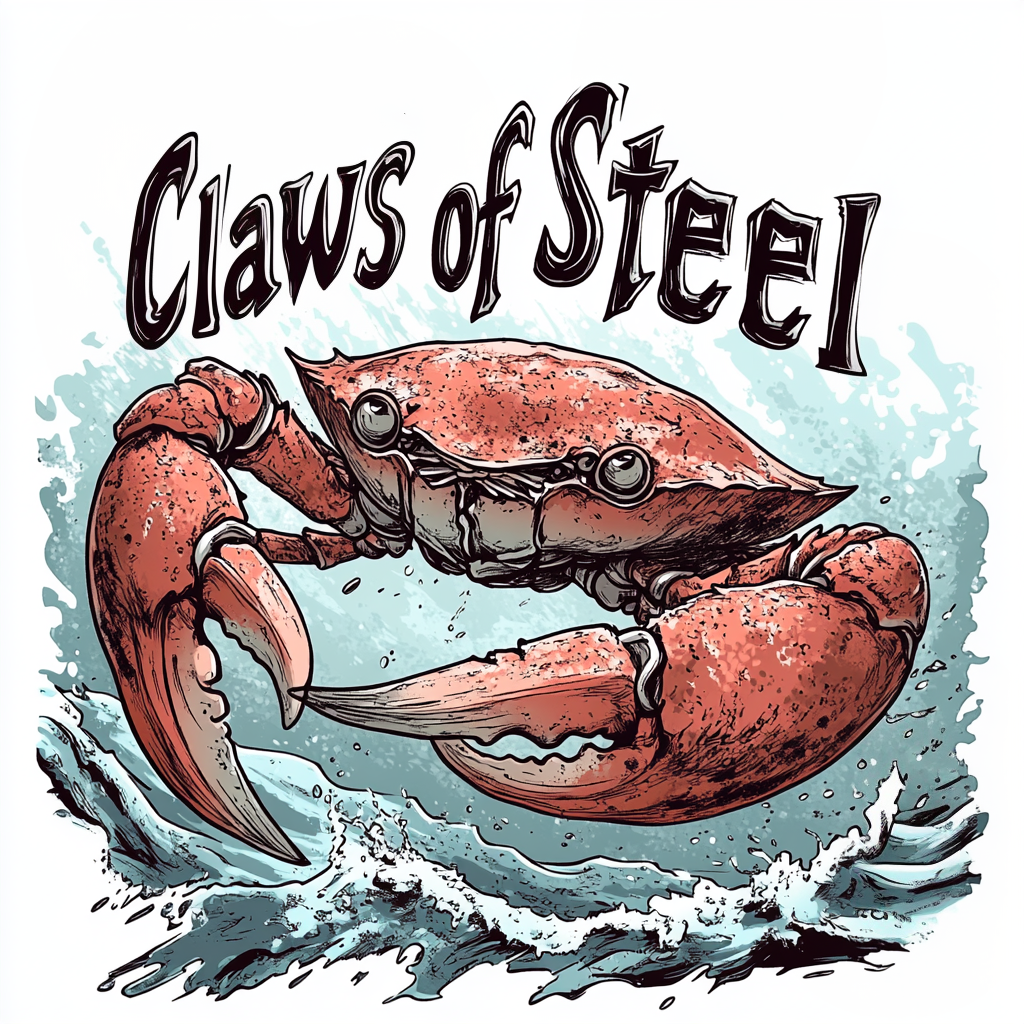
Why Florida Stone Crabs Are a Must-Try: Flavor, Culture, and More
Share
Florida has a way of captivating people—whether it’s the endless beaches, the vibrant culture, or the unique treasures found in its waters. Among these treasures, Florida Stone Crabs stand out as a culinary gem, celebrated not just for their taste but for the story they tell. For those who proudly wear Florida-inspired apparel, these crabs are more than a meal—they’re a symbol of the state’s rich heritage and natural bounty.
So, let’s explore what makes Florida Stone Crabs so sought-after, from their origins to their sustainable appeal, in a journey that’s as flavorful as the crabs themselves. This is a tale of taste, tradition, and Sunshine State pride, perfect for a blog post on a Florida apparel website.
Origins of a Florida Treasure
To begin, consider where these crabs call home. Florida Stone Crabs thrive along the Atlantic and Gulf Coasts, stretching from North Carolina to Belize, but their heartland is unmistakably Florida.
An impressive 98% of stone crab claws served in the United States are harvested from Florida waters, with the Florida Keys and Southwest Florida leading the charge. These regions offer the ideal habitat—warm, shallow waters with rocky bottoms where the crabs can burrow and feed. This geographic connection ties them deeply to the state, making them a natural emblem for Florida pride, much like the apparel that celebrates its landscapes and lifestyle.
The Claw That Captivates
What sets stone crabs apart, however, is their claws—the star of the show. These claws are prized for their meat, which boasts a sweet, tender quality with a subtle briny edge. Often compared to lobster, the texture is firm yet succulent, offering a satisfying bite that appeals to seafood lovers everywhere. The flavor comes from their diet of mollusks and small sea creatures, concentrated in claws that can exert up to 19,000 pounds of pressure per square inch to crack shells.
What’s more, stone crabs possess a remarkable ability: they regenerate their claws. Fishermen harvest a single claw—provided it meets the minimum size of 2 7/8 inches—then return the crab to the water, where it regrows its limb within a year. This natural resilience is a key factor in their enduring popularity.
A Seasonal Sensation
The stone crab season adds another layer to their allure. Running from October 15 to May 1, this seven-month window is tightly regulated by the Florida Fish and Wildlife Conservation Commission to protect the species during its reproductive period. Outside these dates, harvesting is prohibited, creating a sense of anticipation that builds each year.
When the season opens, Florida’s coastal communities come alive with activity—restaurants feature fresh claws on their menus, markets stock up, and seafood enthusiasts plan their visits. This limited availability transforms stone crabs into a seasonal delicacy, heightening their appeal and making them a highlight of Florida’s culinary calendar.
Sustainability at Its Core
Sustainability plays a significant role in why stone crabs have captured so many hearts. Unlike many seafood industries strained by overfishing, stone crab harvesting is a model of environmental stewardship. By taking only one claw and allowing the crab to regenerate, fishermen ensure the population remains robust. Strict regulations, such as size limits and protections for egg-bearing females, further safeguard the species.
For consumers who value eco-conscious choices, stone crabs offer a guilt-free indulgence—a delicious meal that supports a thriving ecosystem. This balance of flavor and responsibility resonates with those who appreciate Florida’s natural beauty, reflected in the apparel that honors its landscapes.
A Flavor Worth Celebrating
The taste, of course, is a driving force behind their fame. Freshly harvested claws are often cooked immediately—sometimes right on the boat—to preserve their quality. Served chilled with a squeeze of lemon or paired with a tangy mustard sauce, the meat delivers a clean, sweet flavor that needs little embellishment.
This simplicity highlights the crab’s natural excellence, making it a favorite for both casual diners and gourmet chefs. Whether enjoyed at a seaside shack or a high-end restaurant, stone crabs offer a taste of Florida’s coastal essence—a connection to the ocean that’s as authentic as the state itself.
A Cultural Cornerstone
Beyond the plate, stone crabs are woven into Florida’s cultural fabric. The tradition dates back over a century, with Joe’s Stone Crab in Miami Beach often credited for sparking their rise. Opening in 1913, this iconic eatery turned stone crabs into a sensation, drawing crowds and cementing their status as a must-try dish. Today, festivals like South Beach Seafood Week and the Everglades City Stone Crab Festival celebrate this legacy, blending food, music, and community spirit.
These events showcase the crabs’ role in Florida’s identity, much like the apparel that captures the state’s laid-back, sun-soaked vibe. Eating stone crabs becomes more than a meal—it’s an experience steeped in history and local pride.
Economic Impact and Value
Economically, stone crabs are a powerhouse for Florida. The fishery generates approximately $30 million annually, ranking it among the state’s top seafood industries. It supports thousands of jobs, from fishermen setting traps to servers delivering plates of claws.
This economic impact underscores their importance, reinforcing Florida’s reputation as the stone crab capital of the nation. For those who wear Florida-themed clothing, there’s a quiet satisfaction in knowing that each claw represents a piece of the state’s livelihood—a tangible link between land, sea, and community.
The Price of Popularity
Yet, this popularity comes at a price. Stone crabs are a premium delicacy, reflecting the effort required to bring them to market. Harvesting involves manually placing and retrieving traps, often in challenging conditions, followed by careful claw removal to ensure the crab’s survival.
The short season and high demand drive up costs, and shipping fresh claws nationwide adds another expense, requiring specialized packaging to maintain freshness. Still, for many, the investment is worth it—a special occasion treat that embodies Florida’s coastal charm.
Why They Stand Out
To illustrate their appeal, here’s a concise breakdown of what makes stone crabs stand out:
- Exceptional Flavor: Sweet, tender meat with a distinctive texture.
- Sustainable Harvesting: Claw-only removal supports long-term viability.
- Florida Roots: Nearly all U.S. stone crabs originate here.
- Seasonal Exclusivity: A limited harvest window heightens anticipation.
- Cultural Significance: A tradition celebrated in dining and festivals.
By the Numbers
For a clearer picture, consider this table highlighting key aspects of their popularity:
| Aspect | Details |
|---|---|
| Annual Revenue | ~$30 million in Florida |
| U.S. Harvest Share | 98% from Florida waters |
| Season Duration | October 15 - May 1 (7 months) |
| Claw Regeneration | ~1 year |
| Minimum Claw Size | 2 7/8 inches |
A Florida Tradition
These figures underscore why stone crabs are more than a passing trend—they’re a cornerstone of Florida’s identity. Much like the apparel that celebrates the state’s spirit, they embody a blend of natural beauty, cultural heritage, and economic vitality.
In the end, Florida Stone Crabs owe their popularity to a perfect storm of factors: their delectable taste, sustainable harvest, deep ties to the state, and the excitement of their seasonal return. They’re a testament to Florida’s ability to turn nature’s gifts into something extraordinary, a quality mirrored in the clothing that pays homage to its shores and skies.
Whether you’re savoring a claw at a waterfront table or simply admiring the state’s coastal legacy, stone crabs offer a delicious reason to celebrate Florida. They’re not just a delicacy—they’re a way to connect with the Sunshine State, one flavorful bite at a time.
